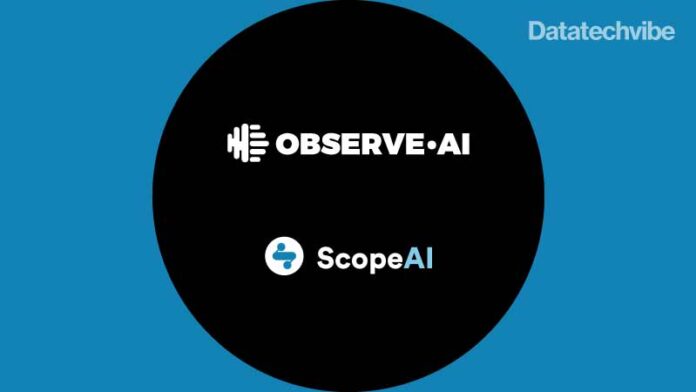Observe.AI, a provider of a platform for analysing data generated by call centres, acquired ScopeAI, which makes tools that automatically extract insights from customer conversations across chat, email, and social media networks.
“The acquisition signals a shift into the omnichannel analytics market that Observe.AI will provide starting this fall, beginning with support for web chat channels,” said Observe.AI CEO Swapnil Jain. Support for email will be added next via updates, he added. The goal is to consolidate voice and text metrics within a single dashboard that enables organisations to optimise customer engagements spanning multiple communications channels.
Current ScopeAI CEO Natalie Abeysena will now lead omnichannel product development for Observe.AI. The acquisition of ScopeAI comes after $54 million in series B funding last year that brought Observe.AI’s total funding to $89 million. Revenues have since then increased 300 per cent, the company claims.
Observe.AI already makes use of automatic speech recognition and natural language processing (NLP) to analyse voice calls via a software-as-a-service (SaaS) platform. Now organizations want to apply those capabilities to every type of communications channel an enterprise routinely employs to engage customers, said Jain. “They need a full view of the customer journey,” he said.
Pursuing conversational intelligence
Overall, enterprises are now starting to invest in “conversational intelligence,” added Jain. The challenge enterprises face in achieving that goal is two-fold. The first is that most interactions with end customers today occur in silos. Most organisations are still unable to maintain context with customers across multiple channels. The assumption is that if a customer contacts an organisation via email, they want the response to come in the form of an email when in some cases the urgency of the matter warrants a phone call.
The second major issue is synthesizing interactions across multiple channels in a way that surfaces actionable insights. Organisations can analyse, for example, a customer support call made via voice, but most can’t aggregate voice, text, email, and social media interactions in a way that makes it possible to identify meaningful trends and patterns. Observe.AI is betting that by acquiring ScopeAI, the combined company will be able to affordably provide that capability to organizations of all sizes, thanks mainly to the economics of cloud computing.
The Observe.AI platform is designed to provide conversational intelligence without requiring enterprises to standardize on a single call centre platform, said Jain. Enterprises are free to employ whatever mix of communications mediums they prefer, he noted.
Also Read: Modernising Legacy Systems? You Should Know This
Keeping customers happy
Regardless of how organisations engage customers, the bar is being raised in the age of digital business transformation. Customers now expect organisations to be able to flexibly respond to inquiries, no matter what medium is employed. The organisations capable of providing that level of customer experience will set themselves apart at a time when it’s increasingly difficult to differentiate products and services.
It’s not immediately apparent who inside organisations is leading the charge when it comes to modernising customer engagements. Observe.AI remains squarely focused on call centres as the primary vehicle through which organisations will engage customers, said Jain. Many of the teams that staff those call centres, in addition to providing customer support, are also given incentives to upsell customers. In many organisations, marketing teams are being put in charge of customer engagement. Elsewhere, sales teams are exercising more influence as maximising the revenue per customer becomes a higher priority.
No matter who is placed in charge of engaging customers, the appreciation for the value of customers has never been higher. The one constant is that organisations of all sizes recognise it is much easier to drive additional revenue from an existing customer than it is to land a new one. As such, the return on investment in customer engagement tends to pay off faster and sooner than any effort to land new customers might.









